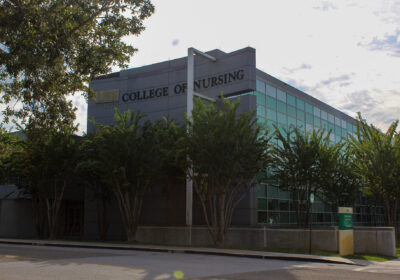OPINION: American Jobs Plan needs to include student debt relief

The American Jobs Plan, which is President Joe Biden’s first major infrastructure bill, is gradually shrinking as it’s passed from one side of the aisle to the other, leaving out major promises Biden made to voters when he was running for president.
Biden promised to cancel $10,000 of debt per student loan borrower as well as cancel all debt for alumni from historically Black colleges and universities in his time as president, according to documents from his joint task force with Sen. Bernie Sanders.
However, he has dropped the ball in his most recent chance to fulfill these promises by failing to add them to the American Jobs Plan, effectively ignoring a chance to not only benefit students personally but also boost the economy. Canceling student debt should be included in the final draft of this plan.
White House Chief of Staff Ron Klain announced April 2 that Biden asked the U.S. Department of Education (DOE) to prepare a memo that went over his executive ability to cancel debt.
Klain announced this would hopefully be seen in a few weeks, yet two months later no word or timeline has been given. Debt Collective, a union of debtors who push for student debt cancellation, believes this “memo” to be a stall tactic to avoid confronting the issue of student debt.
For it to be stalled when it affects the economy and students doesn’t make sense, especially since this was one of Biden’s key points in his campaign.
Student loan debt holds the second largest share of household debt with 45 million Americans affected, according to Brookings Institution. The total national amount of student loan debt comes out to a whopping $1.7 trillion, as charted by the Board of Governors of the Federal Reserve System, which doesn’t serve well for the economy and burdens millions of households with this debt.
The DOE’s Office of Federal Student Aid has data that shows canceling $10,000 of debt would completely relieve 15.3 million borrowers of their student debt, nearly 34% of Americans struggling with student debt. It would also highly benefit the 9.6 million Americans with student loan debt between $20,000 and $40,000.
Many USF students are among these 9.6 million Americans after only four years of college. About 35% of all USF’s Tampa campus undergraduate students utilize federal student loans to help pay for their education, averaging $7,679 per year. This means one student would end up with $15,358 after graduating with their associate’s degree and $30,716 after graduating with their bachelor’s.
Canceling this debt right now could also work to keep the economy and college-educated Americans afloat as the pandemic comes to a close.
Bharat Ramamurti, a member of the COVID-19 Congressional Oversight Commission, which focuses on economic stabilization efforts during the pandemic, explained in a Nov. 16 Twitter thread that canceling student debt could also mean current loan payments would be used for savings or other spending instead. Those who make payments pay on average $200-$299 per month, according to the Federal Reserve 2019-20 report. These payments have been temporarily frozen due to the pandemic, but are scheduled to resume Oct. 1 of this year.
Ramamurti explained this would be “like sending those people a check every month,” essentially putting $3,000 in Americans’ pockets annually, which could help boost the economy.
Student loan forgiveness would also greatly benefit people putting off milestones due to student loan debt. In the aforementioned survey conducted by SoFi, it was found that 61% of millennials have delayed buying a home because of their student loan debt while another 39% have put off moving to another city or state and over 35% have put off starting a family.
The pledge for student loan forgiveness has been sidelined not only in the jobs plan but also the current budget Biden has proposed. The budget is apparently focused on what has already been put forward by the administration, according to White House Budget Office Spokesman Rob Friedlander, and no major initiatives that aren’t being actively worked on will be included in the proposal.
The issue with this is, as Sen. Elizabeth Warren claimed at a press conference Feb. 4, Biden has the power to cancel debt through executive action.
“President Biden can take the single most effective executive action available to provide a massive stimulus to our economy, help narrow the racial wealth gap and lift this impossible burden off of tens of millions of families,” said Warren.
Signing this executive order would be painless and wouldn’t get in the way of championing other policies, which is all the more reason for it to be included as soon as possible.
When Biden promoted a plan for student debt forgiveness during his campaign, he provided hope to people struggling under the weight of debt. To back out of it now isn’t what’s beneficial to the country or the people who voted for him. This plan is something that should continue to be fought for by citizens, Congress and our president.






